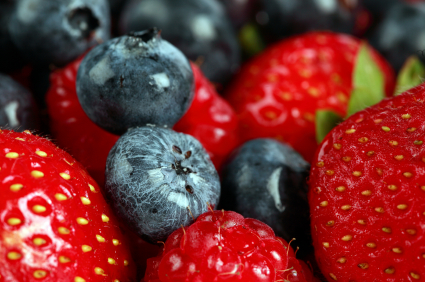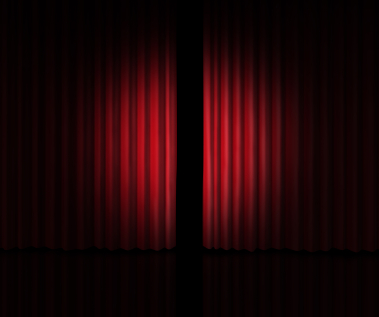Why are you SPEAKING SO LOUDLY? Exhaustion, stress and hearing
 It’s fairly well known and accepted that many people in our generation have hearing issues like tinnitus or a slight loss, likely the result of late nights blasting the stereo, endless live concerts and the introduction of mobile music players (anyone remember their first Walkman!). In fact, hearing problems on one of the top ten public health disorders and are believed to affect about a third of the general population. Coupled with aging, diseases such as diabetes, mental health issues or heart disease and the environment, and it’s possible that we don’t stand a chance against auditory dissonance. Or do we?
It’s fairly well known and accepted that many people in our generation have hearing issues like tinnitus or a slight loss, likely the result of late nights blasting the stereo, endless live concerts and the introduction of mobile music players (anyone remember their first Walkman!). In fact, hearing problems on one of the top ten public health disorders and are believed to affect about a third of the general population. Coupled with aging, diseases such as diabetes, mental health issues or heart disease and the environment, and it’s possible that we don’t stand a chance against auditory dissonance. Or do we?
Researchers say that men are more prone to hearing issues than women. That is, until exhaustion sets in. Yup, exhaustion evidently makes women oversensitized to sound when they are exposed to stressful situations.
Say what?!
Stress plus exhaustion leads to hypersensitive hearing, that is, an acute reaction to sounds that would normally not bother us. In fact, when men and women were evaluated for their degree of emotional exhaustion and then exposed to an acute stress situation, the women became oversensitized, reacting to sounds at normal conversational levels (i.e. 60 decibles). In particular case, emotional exhausted was rated on a scale of one to five and entailed things like feeling drained by work or totally exhausted after the workday is completed or burned out . The acute stress situations only lasted five minutes. And, hearing was measured before and after the exercise.
So, what about the gender differences? Importantly, researchers say that women, namely postmenopausal women, have accelerated hearing loss (oh, joy!) that is related to sex hormones. Add emotional exhaustion and stress to the mix, and we overreact to things that would normally not bother us. It’s not rocket science but it’s good to know that stress hormones and sex hormones together contribute to somewhat irrational behavior, you know, the type related to experiencing conversation, a rattling of cutlery or the sound of a car engine that causes a woman to go off her rocker a bit and even experience that sound as painful. And while the mechanisms are not quite understood, the message is clear – if you are exhausted, you may be ripe for an overreaction of the audible type.
Read MoreWednesday Bubble: Women, Heart Disease & Diet
Yes, it’s Monday and I’ve already posted today’s piece. However, nothing like bursting the ol’ Wednesday Bubble early. So, ladies, listen up! When it comes to heart disease, namely a heart attack, your diet matters. In fact, researchers report that eating three or more servings of blueberries or strawberries a week can cut the risk of heart attack by as much as a third.
Nevermind the early Wednesday Bubble; have I got your attention yet?!!
Aging is a risk factor for heart disease, a leading cause of death in women. Moreover, the reason that more and more women start to die from heart disease as they grow older appears to have everything to do with the ability of cells to repair and replenish circulation and not much at all to do with waning hormone levels. You can read about that here. Cholesterol levels and weight gain also play a role. As does diet, in particular, the incorporation of flavonoids — compounds that are ubiquitous in nature — and found in many plant-based foods including fruits, vegetables, tea and wine. Yet, of the 4,000 some odd flavonoids that exist, which are the most beneficial in heart disease?
To tease out this answer, researchers followed over 93,000 women enrolled in the Nurses Health Study II over a period of 18 years. During this time, the women, all of whom were between the ages of 25 and 42 at enrollment, completed questionnaires about their diets every four years. Their findings? Women who reported eating higher levels of a subclass of flavonoids known as ‘anthocyanins,” which are responsible for the red, purple and blue colours of many fruits and vegetables, had as much as a 32% reduction in the risk for heart attack. Indeed, for every 15 mg increase in dietary intake of anthocyanins, the relative risk of having a heart attack declined by 17%. Importantly, these results remained unchanged even when researchers factored in other plant-based food constituents (such as potassium or folate), total fruit and vegetable intake, as well as alcohol drinking, and the presence of high blood pressure and/or diabetes.
The researchers point out that anthocyanins are believed to dilate arteries, counter the buildup of plaque and inhibit other mechanisms that contribute to atherosclerosis. Understanding how they work to counter the risk of a heart attack is important because the mechanisms underlying heart attack in younger and middle aged women versus their older peers, are different.
Of note, blueberries and strawberries were part of the analysis because they are the most eaten berries in the U.S. That aside, it is possible that eating other foods that have high levels of anthocyanins could produce similar benefits.
Want to stave off your risk of a heart attack? Eat more berries every week. It’s an easy fix for what could be a huge problem and there’s no time like the present to start on the path to heart health.
(This study appears in the online version of Circulation, the Journal of the American Heart Association.)
Read More
Extra! Extra! There’s no news like bad news…
 How are your stress levels? If you have been following this blog for any period of time, you know that midlife is filled with natural stressors. And that that stress can boost cortisol levels, leading to abdominal fat and weight gain. (You may recall that cortisol is the hormone that is released when the body is exposed to stress.) However, short of incorporating mind-body strategies, more exercise and healthier eating habits in your life, what can you do?
How are your stress levels? If you have been following this blog for any period of time, you know that midlife is filled with natural stressors. And that that stress can boost cortisol levels, leading to abdominal fat and weight gain. (You may recall that cortisol is the hormone that is released when the body is exposed to stress.) However, short of incorporating mind-body strategies, more exercise and healthier eating habits in your life, what can you do?
Well, it appears that turning off the news may go a long way towards insuring that any initial exposure to negative headlines or news stories does not domino into a prolonged physical reaction. In fact, when researchers compared the effects of exposure to stress in men and women, they found distinct differences that may impact future habits.
What does regular exposure to 24 hour news cycles do to our brains?
When researchers exposed four groups of men and women to either 24 neutral (e.g. a park opening) or negative (e.g. murder or accidents) stories followed by a stress test, they found that that reading negative news stories had no effect on cortisol levels. However, when women were subsequently exposed to stress after reading the negative stories, their cortisol levels did increase significantly. Moreover, a day later, these very same women had greater recall of these negative or emotional stories compared to their male counterparts and compared to the groups who were only exposed to neutral stories.
Truly, there is no news like bad news, at least for women. In fact, researchers say that exposure to negative news media on a regular basis can take its toll, leading women to react more strongly and more stressfully to other situations and factors in their lives. They have a tendency to ruminate on what they’ve observed and may even elaborate and extenuate information in ways that lead to greater memory for and reaction to the negative in their lives.
Ultimately, the message is clear: by limiting regular exposure to negative news cycles, women may be able to modulate reactions to other daily stressors. The question lies whether or not deliberately balancing the good with the bad has the same effect.
Read MoreWednesday Bubble: Reinventing Women Open Call
Did you catch Monday’s post about Hessie Jones and the path she’s taking to reinvention? If not, you don’t want to miss it!
I’m introducing a new series on Flashfree — Reinventing Women — and I want to talk to you! I want to hear about the career changes you’ve made in midlife, the ‘why,’ ‘what,’ and ‘how’ as well as any other nugget of wisdom that you might impart to others considering a similar reawakening.
Consider this Wednesday Bubble yours’ to burst; this is an open call.
If you are a woman, age 44 or older and want to share your story of your work transition (or transitions), drop me an email at flashfree111@gmail.com. Tell me a little about you, your age and what you used to do (and what you are doing now). I am hoping to find at least 10 more women willing to share their stories, their triumphs, their failures and their lessons.
Reinventing Women. It’s a new movement and it’s all about you!
Read More
Reinventing Women: One Part Courage, Two Parts Happy. Meet Hessie Jones…
 According to a recent article written by an economist in the Bureau of Labor Statistics, today’s workforce is increasingly comprised of individuals who are older and more ethnically and racially diverse. There are also more women in the workforce than ever before, and by the year 2020, roughly 77 million women in the U.S. are expected to be actively working.
According to a recent article written by an economist in the Bureau of Labor Statistics, today’s workforce is increasingly comprised of individuals who are older and more ethnically and racially diverse. There are also more women in the workforce than ever before, and by the year 2020, roughly 77 million women in the U.S. are expected to be actively working.
Yet, while the Pew Research Organization reports that having a family and children, and being a good parent still trumps career, women are not leaving their careers to marry or have children. Rather, most choose to balance career and family. However, what happens to that career as women start to age, children start to grow up or leave the home, marriages and partnerships break up and work that once fueled souls and passions no longer appears to do so? What drives the urge to change careers during midlife? What exactly is ‘reinvention?’
When I posed this question a few months back, one of the first women I heard from was Hessie Jones. Hessie defines reinvention as “rethinking about your life, where you were, where you are and where you’re gonna go, i.e. having the courage to follow the path you were meant to lead regardless of your present state.”
A former VP of Marketing at Jugnoo and now in the process of yet another change, Hessie says that the first time she reinvented herself, she was only 39. That was 6 years ago, and since that time, she has used her drive and instincts to transform how companies view social media from simply another marketing or PR channel to an essential medium that can fuel organizational transformation and evolution. The key to successful reinvention, she notes, is being in the right frame of mind and possessing the vision to recognize when the timing is ripe for change. Yet, for Hessie, reinvention did not come without a price. “The hours away from home, my passion to meeting people with the same mindset, the need to network and experiment with different technologies/companies caused many disagreements at home. It also left my kids without an ‘attentive’ parent for a time. I received a lot of criticism from both sides of my family, especially when it was apparent that I was not fulfilling my responsibilities as a parent and spouse.” Still, her husband never asked her to step back, believing that her attempts at change are important to her personal progress.
All this disruption appears to have also yielded a deeper sense of self awarenesss. Hessie says that it’s most important to follow one’s heart but not at the expense of the rest of one’s life. “Don’t fight it. Let it guide you to making the right decision for yourself. But do not forsake your family in the meantime.” She shares a pearl of knowledge that was once shared with her; while passion may fuel change, it is important not to let the job take over; having no one to share one’s successes with is a lonely avenue.
Hessie’s courage to forge a new path several times over has yielded a few pearls of its own, including the fact that courage should be wrapped in a whole lot of happy. She says that it’s important to figure out what ‘happiness’ is and conduct a sanity check to see if your present situation is making you happy, adding that when her daughter asked what she should be when she grew up, she told her the following:
Do what you love to do not because of money, but because it makes you smile. Do not stay in a job because it’s safe. Move towards a job that challenges you. And never stop learning.
Is happy the mother of reinvention? Hessie Jones appears to be following her bliss.
What about you?
Read More








